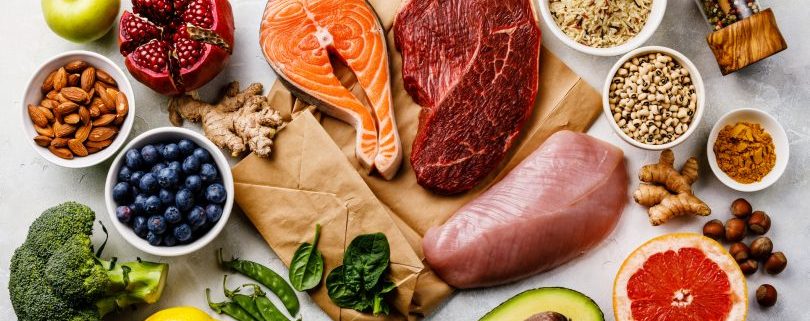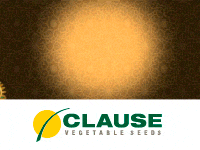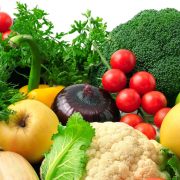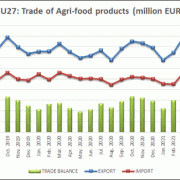Agri-food exports slow down its growth (+ 0.4%) in 2018
The agrifood sector continues pulling Spanish exports, but the latest data show a significant slowdown, growing a limited 0.4% to 47,405 million euros in 2018. This moderate growth contrasts with the increase in the previous year (+ 6.5%), as well as with the average of the decade 2008-2018 (+ 5.5%), and highlights a slowdown in sales abroad of agri-food products.
Regarding the trade balance, there has been a decrease to 11,042 million euros in 2018, compared to 11,300 million euros last year, according to a report prepared by experts of the Master in Management of Agrifood Companies – LAFER Foundation, based on the provisional data offered by DataComex (Secretary of State for Commerce). Also, note that for the first time in recent years the whole of Spanish agri-food exports behaved worse than those of our main competitors in the EU framework: Italy (+ 1.3%) and France (+ 2.1%) ).
Among the countries that reduced their purchases of agri-food products to Spain, it is worth highlighting the significant decrease produced by Italy (-8%), China (-7%), Belgium (-5%) and Mexico (-17%). In the case of Italy this drop is marked by sales of olive oil in bulk, while the decline in exports to the Chinese market, which in total accounted for 1,118 million euros, is a warning signal to occur for the second consecutive year .
Brexit, what brexit?
Positively surprised by the data of exports from the United Kingdom that grow above the average (+ 2%) to 3,953 million euros, as well as those of the US, which in the context of commercial war, grow by 1% to 1,901 million of euros. Also, note the strong growth of exports to three countries, in particular to South Korea (+ 28%), Canada (+ 41%) and the Philippines (+ 75%). The main destination market remains France, with exports worth 7,724 million euros (+ 2%), followed by Germany with 5,593 million euros (+ 2%) and Italy with 4,847 million euros.
In a more medium- and long-term analysis, mention that the markets of the Far East (South Korea, China, the Philippines, Japan, Hong Kong and Taiwan) reflect a great pull by the Spanish food, reaching a total value over the 3,000 million euros. Taking into account the results of previous trade agreements by the EU, for example the one signed with South Korea in 2010, it is advisable to pay attention to the potential that future agreements with Canada and Japan could make.
The wine keeps the type in 2018
In terms of products, the evolution of the data is negative in the main export sectors, such as pork (-3%), citrus (-5%) and olive oil (-18%). In any case, these three foods continue to lead sales abroad, with figures all over 3,000 million euros.
The sharp fall of olive oil, in direct relation with the variations in production and average export price recorded in the harvests affected, makes it lose the first position as an export product, in favor of pork. Wine exports grow slightly (+ 2%) to 2,957 million euros, although if analyzed from a broader perspective, taking for example the last five years, we obtain a totally different result. According to this analysis, the products that have grown most in this last five-year period are olive oil (+ 9%) and pork (+ 8%), while wine (+ 2%) and citrus fruits (+ 1%) ), reflect a certain stagnation, growing below the average of + 5%.
Challenges: the creation of value and digitalization
Regarding the challenges of the sector in the field of export, the creation of value is invariably maintained year after year. The outstanding increase in agrifood exports in the last 10 years clearly above our competitors, has not been accompanied by increases in the average value of exported products. A clear example of this is the price of Spanish wine exports, the lowest among the main producers worldwide and more than four and a half times lower than that of our neighbors and French competitors.
“In the process of value creation, it is also worth highlighting the cases of companies that in recent years have demonstrated their ability to forge a recognized brand with high added value at an international level,” recalls Jaime Palafox, agri-food expert and one of the promoters of the cited report.
Finally, regarding trends, it is obvious that digitalisation, not only through e-commerce, is one of the star themes of the agri-food sector. However, as Palafox indicates, “we must place it in its proper measure because although it presents with strong growth, currently only represents 1.5% of the food market in Spain and in leading countries, such as China or South Korea is 6.2% and 19.7% respectively. ” “It does not seem that the e-commerce will end traditional retail as some predict, but rather that a mixed process of traditional operators will take place, entering into online commerce and online operators entering into retail, as we have already done. seen with the purchase of Whole Foods by Amazon, “recalls Palafox.
About the Master in Agri-Food Business Management (MGEA).The LAFER Foundation is the driving force behind the Master in Agrifood Business Management, and has the academic collaboration of the University of Nebrija. This postgraduate course is included in the High Training Program for Business Managers of the Agroalimentary Chain of the MAPA, and in its different editions has managed to bring together leading actors in the agri-food sector.
More information: www.masteragroalimentario.es
| Millones de EURCrecimiento medio anual | Totales bienes en la economía | Sector agroalimentario | Productos transformados |
| Exportaciones 2018 | 285.024 | 47.405 | 29.970 |
| Importaciones 2018 | 318.864 | 36.363 | 22.369 |
| Balanza comercial 2018 | -33.840 | +11.042 | +7.601 |
| Exportaciones 2017-2018 | 3,2% | 0,4% | -1,5% |
| Exportaciones 2013-2018 | 3,9% | 5,1% | 5,7% |
| Exportaciones 2008-2018 | 4,2% | 5,5% | 5,8% |
| Ranking Mercados Exportaciones productos agroalimentarios (millones €; tasas medias anuales) | |||||
| Nº | Mercado | 2018 | 2017-18 | 2013-18 | 2008-18 |
| 1 | Francia | 7.724 | 2% | 3% | 4% |
| 2 | Alemania | 5.593 | 2% | 4% | 5% |
| 3 | Italia | 4.847 | -8% | 5% | 4% |
| 4 | Portugal | 4.442 | 0% | 2% | 3% |
| 5 | Reino Unido | 3.953 | 2% | 5% | 6% |
| 6 | Países Bajos | 2.191 | 0% | 5% | 5% |
| 7 | Estados Unidos | 1.901 | 1% | 11% | 9% |
| 8 | China | 1.118 | -7% | 22% | 26% |
| 9 | Bélgica | 1.050 | -5% | 3% | 4% |
| 10 | Polonia | 993 | 3% | 6% | 7% |
| 11 | Japón | 912 | 4% | 13% | 11% |
| 12 | Suiza | 562 | -1% | 3% | 5% |
| 14 | Corea del Sur | 480 | 28% | 29% | 20% |
| 15 | Marruecos | 455 | -5% | 20% | 11% |
| 18 | México | 369 | -17% | 9% | 8% |
| 19 | Canadá | 348 | 41% | 17% | 12% |
| 20 | Argelia | 335 | 42% | 0% | 4% |
| 23 | Arabia Saudita | 323 | -1% | 7% | 11% |
| 25 | Libia | 296 | 1% | 15% | 16% |
| 26 | Filipinas | 281 | 75% | 14% | 21% |
| 28 | Rusia | 264 | -4% | -15% | -6% |
| TOTAL | 47.405 | 0,40% | 5,10% | 5,50% | |
| Nº | Producto | 2018 | 2017-2018 | 2013-2018 | 2008-2018 |
| 1 | 0203 Carne de cerdo | 3.414,32 | -3% | 8% | 7% |
| 2 | 0805 Cítricos | 3.092,58 | -5% | 1% | 2% |
| 3 | 1509 Aceite de oliva | 3.027,47 | -18% | 9% | 5% |
| 4 | 2204 Vino de uva | 2.957,91 | 2% | 2% | 4% |
| 5 | 0709 (espárragos, berenjenas pimientos) | 1.872,71 | 2% | 6% | 6% |
| 6 | 0810 (Fresas, frutas del bosque, kiwis..) | 1.608,46 | 3% | 9% | 10% |
| 7 | 0809 Frutas de hueso (Albaricoques, cereza, melocotón) | 1.087,15 | 0% | 1% | 4% |
| 8 | 1905 Productos de panadería y pastelería | 954,16 | 5% | 8% | 9% |
| 9 | 2005 Conservas vegetales (incluye aceitunas) | 937,99 | -3% | 4% | 3% |
| 10 | 0702 Tomates | 927,16 | -8% | -2% | 1% |
| 11 | 0307 Moluscos (ostras, mejillones, pulpo, calamar) | 914,39 | 9% | 17% | 9% |
| 12 | 1604 Conservas de Pescado | 793,5 | 6% | 6% | 6% |
| 13 | 0303 Pescado congelado | 791,42 | -2% | 0% | 3% |
| 14 | 0802 Zumos | 771,89 | 6% | 3% | 5% |
| 15 | 0705 Lechugas | 745,07 | 2% | 3% | 5% |
| TOTAL | 47.405 | 0,40% | 5,10% | 5,50% | |
| Elaboracion propia a partir de DATACOMEX | |||||















